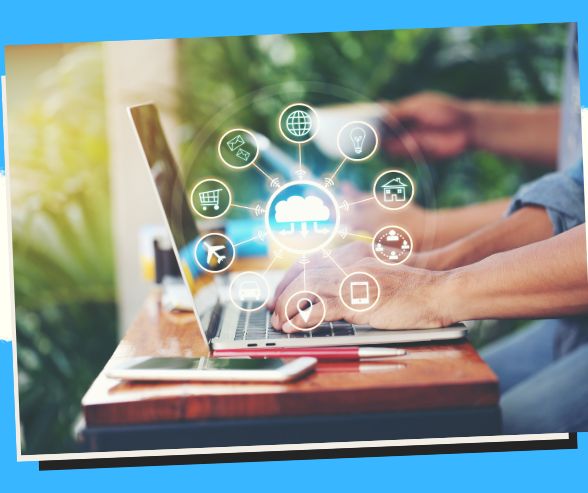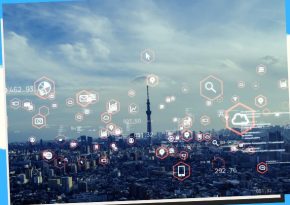
Green Tech Revolution: IoT’s Impact on Environmental Awareness! 

Guardians of the Earth: How IoT is Revolutionizing Environmental Monitoring 


In an age where environmental concerns are paramount, technology has become a powerful ally in safeguarding our planet. The Internet of Things (IoT), with its interconnected sensors and devices network, is at the forefront of this ecological revolution. IoT for environmental monitoring is a game-changer, offering real-time data collection, analysis, and actionable insights to protect and preserve our natural world. This comprehensive article will explore how IoT is reshaping environmental monitoring, its myriad applications, and the potential for a sustainable future.
Understanding IoT in Environmental Monitoring
In environmental monitoring, the Internet of Things (IoT) refers to deploying interconnected sensors, devices, and systems to collect data on environmental conditions and processes. These devices are equipped with sensors that measure various parameters such as temperature, humidity, air quality, and water quality. The collected data is transmitted via the Internet to central databases or platforms for real-time monitoring, analysis, and decision-making.
1. Air Quality Monitoring: Breathing Easier
Air pollution is a pressing global concern, affecting human health and the environment. IoT technology offers precise monitoring solutions:
- Air Quality Sensors: IoT sensors measure air pollutants such as particulate matter (PM2.5 and PM10), nitrogen dioxide (NO2), sulfur dioxide (SO2), and carbon monoxide (CO). Real-time data helps identify pollution sources and mitigate health risks.
- Environmental Sensor Networks: Deployed in urban areas, these networks collect data on air quality, allowing for the creation of pollution maps and implementation of targeted interventions.
2. Water Quality Monitoring: Protecting Our Water Resources
Ensuring clean and safe water sources is crucial for both humans and ecosystems. IoT plays a vital role in water quality monitoring:
- Smart Water Sensors: IoT-enabled sensors in water bodies, reservoirs, and distribution systems monitor parameters such as pH, turbidity, dissolved oxygen, and contaminants. This data informs water treatment processes and early pollution detection.
- Aquatic Ecosystem Monitoring: IoT devices can monitor water conditions in rivers, lakes, and oceans, helping to protect aquatic ecosystems and preserve biodiversity.
3. Weather and Climate Monitoring: Predicting Change
Accurate weather and climate data are essential for understanding and responding to the changing climate:
- Weather Stations: IoT weather stations collect data on temperature, humidity, wind speed, and precipitation. This information aids in forecasting weather patterns and natural disasters.
- Climate Observation: IoT devices placed in remote or extreme environments provide data on climate change indicators such as ice melt, sea level rise, and temperature shifts.
4. Soil Health Monitoring: Nurturing Agriculture
Healthy soil is the foundation of agriculture. IoT assists in monitoring and managing soil conditions:
- Soil Moisture Sensors: IoT sensors measure soil moisture levels, enabling precise irrigation control and preventing overwatering.
- Nutrient Monitoring: Soil sensors can detect nutrient levels, helping farmers optimize fertilizer use and reduce nutrient runoff into water bodies.
5. Wildlife and Ecosystem Monitoring: Preserving Biodiversity
IoT technology aids in wildlife research and habitat preservation:
- Animal Tracking: IoT trackers attached to wildlife allow researchers to study migration patterns, behavior, and population trends.
- Ecosystem Sensors: Deployed in sensitive ecosystems, IoT sensors monitor conditions to protect fragile habitats and species.
Benefits of IoT in Environmental Monitoring
The integration of IoT in environmental monitoring offers numerous benefits:
- Real-Time Data: IoT provides real-time data, enabling rapid responses to environmental threats like pollution events or extreme weather.
- Cost-Efficiency: IoT reduces the need for manual data collection, resulting in cost savings and more extensive monitoring coverage.
- Early Warning Systems: IoT enables the creation of early warning systems for natural disasters, helping to mitigate their impact.
- Data-Driven Decisions: The data collected by IoT devices informs evidence-based decision-making for environmental protection and resource management.
- Environmental Awareness: IoT fosters public awareness of environmental issues by providing accessible, up-to-date information.
Challenges and Considerations
Despite its promise, IoT in environmental monitoring faces several challenges:
- Data Privacy: Collecting environmental data may inadvertently capture personally identifiable information, requiring robust privacy safeguards.
- Security Concerns: IoT devices are vulnerable to cyberattacks, making security measures crucial to protect sensitive environmental data.
- Interoperability: Ensuring compatibility and standardization among IoT devices from different manufacturers is essential for seamless integration.
- Data Overload: The vast amount of data collected by IoT devices can overwhelm systems, requiring efficient data management and analysis.
- Energy Consumption: IoT devices require power, and the energy sources used must align with sustainability goals.
The Future of IoT in Environmental Monitoring
The future of IoT in environmental monitoring is teeming with possibilities:
- AI and Machine Learning Integration: AI algorithms will analyze IoT data to provide predictive insights, facilitating quicker responses to environmental changes.
- Blockchain for Transparency: Blockchain technology will enhance transparency and trust in environmental data, ensuring its integrity.
- Satellite IoT: The integration of IoT with satellite technology will expand monitoring capabilities to remote and inaccessible areas.
- Citizen Science: IoT-enabled citizen science initiatives will empower individuals to contribute to environmental monitoring efforts.
- Smart Cities: IoT technology will transform urban areas into smart cities, integrating environmental monitoring into everyday life.
Conclusion
IoT for environmental monitoring is a powerful tool in our collective effort to protect and preserve our planet. From monitoring air and water quality to tracking wildlife and mitigating climate change, IoT technology is revolutionizing our approach to environmental management.
However, the successful implementation of IoT in environmental monitoring requires addressing security, privacy, interoperability, and data management challenges. Companies, governments, and individuals embracing this transformative technology are contributing to a healthier planet and creating a more sustainable future for generations to come.
As IoT continues to evolve, environmental monitoring will become more sophisticated, accurate, and accessible, empowering us to be better stewards of our Earth.
Related Queries
IoT’s vital role in environmental monitoring
Transforming environmental data with IoT
Impact of IoT on environmental awareness
Monitoring the Earth’s health with IoT
IoT’s contribution to marine conservation
Eco-friendly manufacturing with IoT solutions
Data-driven earth stewardship with IoT insights
Sustainable energy monitoring with IoT and solar power
Boosting agricultural sustainability with IoT
Environmental engagement through IoT tools
Save/Share this story with QR CODE
Disclaimer
This article is for informational purposes only and does not constitute endorsement of any specific technologies or methodologies and financial advice or endorsement of any specific products or services.
 Need to get in touch?
Need to get in touch?

We appreciate your reading. 
1.) 

Your DONATION will be used to fund and maintain NEXTGENDAY.com
Subscribers in the Philippines can make donations to mobile number 0917 906 3081, thru GCash.
3.) 
4.) 
AFFILIATE PARTNERS

World Class Nutritional Supplements - Buy Highest Quality Products, Purest Most Healthy Ingredients, Direct to your Door! Up to 90% OFF.
Join LiveGood Today - A company created to satisfy the world's most demanding leaders and entrepreneurs, with the best compensation plan today.

 Business, Finance & Technology
Business, Finance & Technology











 MANILA – Department of Social Welfare and Development (DSWD) […]
MANILA – Department of Social Welfare and Development (DSWD) […]

